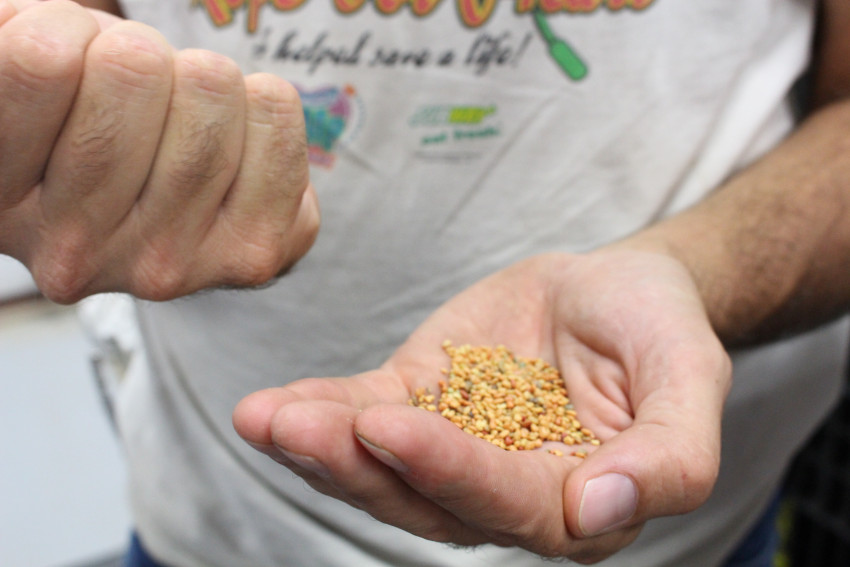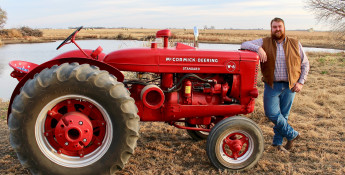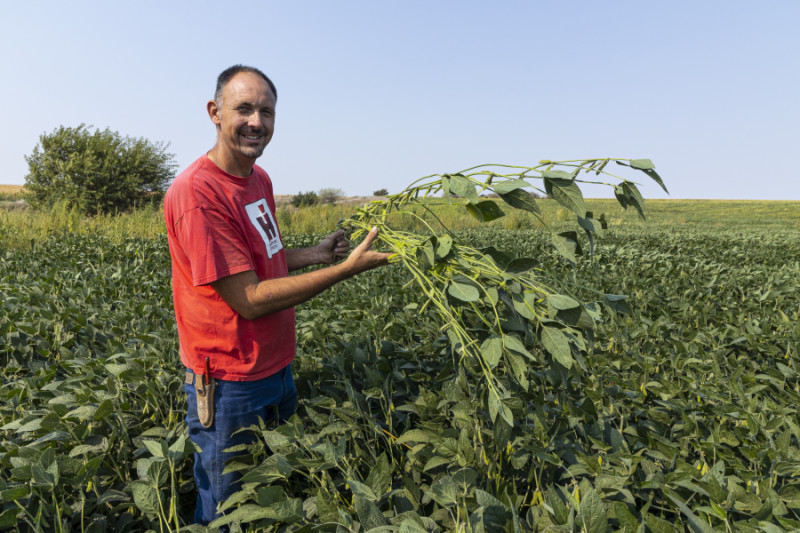By Greg Doering on August 3, 2023
Conservation on the Farm
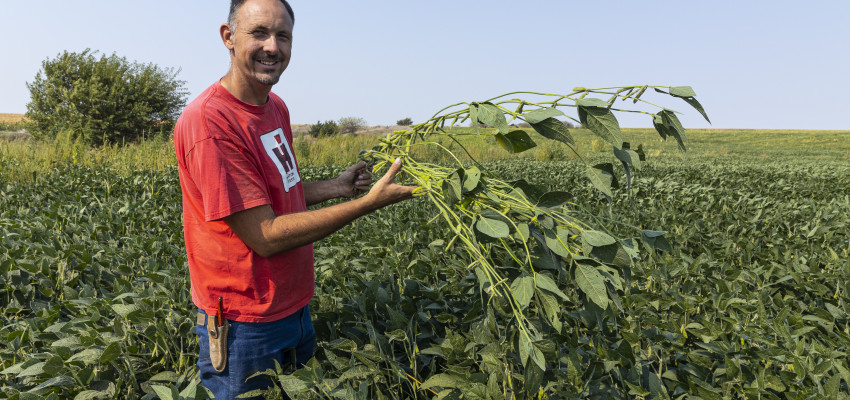
Michael Thompson wasn’t having a good Wednesday in early May. Just as he was getting ready to begin planting corn, a hydraulic hose broke and sprayed the planter with oil. After a quick repair, he set about cleaning up the planter when the nozzle of his pressure washer broke off.
“Monday was a good day, so I guess we’re making up for that now,” he said.
Even without the nozzle, the pressure washer still produced enough of a water jet to clean the planter, but the minor breakdown illustrated how aggravating farm life can be on a daily basis. Attempting to fix one thing can cascade into a series of complications.
In the end, the broken pressure washer was a tiny obstacle that caused barely any delay. Thompson has overcome much bigger problems, including his family telling him to leave the farm.
“At 18, I was told basically, the farm wasn't big enough to support another generation of farmers,” Thompson says. “I was told to go get an education and move off the farm. But I wasn't going to take that for an answer.”
THE FAMILY FARM
Thompson is the sixth generation to farm in northeast Norton County, just a few miles south of the Nebraska border, where he farms with his father and brother. In an average year a little over 20 inches of precipitation falls on the rolling hills that make up the farm. With proper management, the deep fertile soil can capture most of the moisture that falls and produce bountiful crops of corn, wheat and soybeans while also raising cattle.
Of course, that’s when it does rain. The broken hose and busted nozzle were minor inconveniences compared to the ongoing drought Thompson has faced. The corn he planted in May was the third straight season with below-normal moisture.
“It’s been kind of rough the last three years,” he says. “We’re feeling the pinch of being severely below normal on rainfall. If we could just get an average year here it would help out a lot.”
Thompson says management changes he’s made like not tilling his fields (no-till) and utilizing cover crops, which help reduce erosion, have helped weather the drought better than he anticipated. But that’s just one of the many side benefits of the changes. Thompson’s primary goal was returning to the farm, even if that meant a different kind of farm.
STARTING SLOW
Thompson’s return plan involved rethinking the farm’s overall management to more efficiently utilize its most important asset — soil. The traditional plan on the farm involved a crop rotation that included a fallow period after wheat harvest where the land was left alone to recover and build up a store of moisture prior to the next planting. In addition to conventional tillage where a plow left bare soil to prepare each field for planting.
“What we started doing was just working away from wheat fallow to basically anytime we had fallow in the rotation, we’d plant something that was a grazable-type crop,” Thompson says. “We also went completely no-till in the same time frame, and that’s how we started on the journey.”
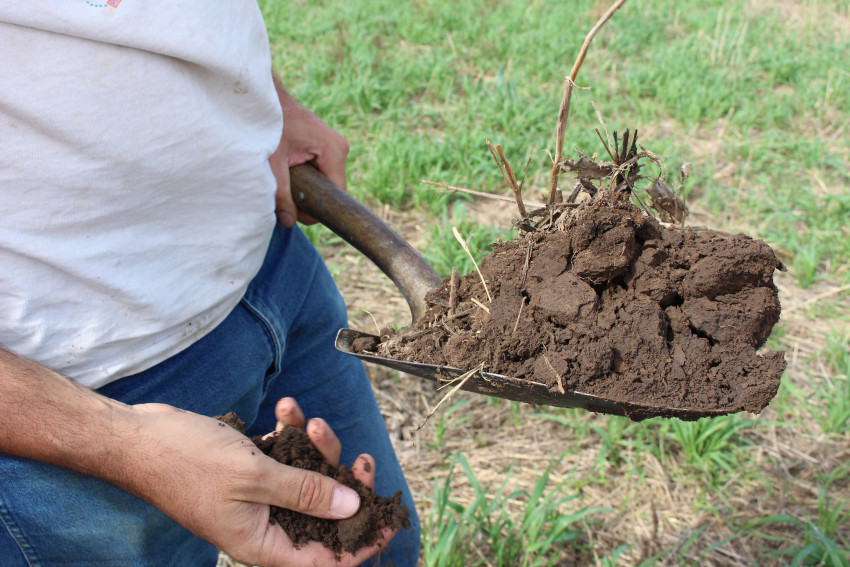 The combination of no-till practices and cover crops for grazing slowly started showing promise, especially on the hillsides that dominate the Thompsons’ fields.
The combination of no-till practices and cover crops for grazing slowly started showing promise, especially on the hillsides that dominate the Thompsons’ fields.
“One of the first things we saw when we started adding more ground cover was we didn’t have the water erosion when it rained, and we didn’t have blowing dust when it was dry,” he says.
The benefits extended beyond erosion control. The combination of not tilling the soil and adding cover crops slowly started improving the land. Fertilizer went farther, producing healthier plants and better crop yields. When it rained, more of the moisture soaked into the ground.
“We started doing it (no-till and cover crops) on a lot of our poor side hills and our poor ground,” Thompson says. “Then as we started getting into it, our poor ground was doing as good as our better ground. So we thought we better start doing across the farm.”
EFFICIENCY GAINS
While the added ground cover took some time to see results, Thompson says his father understood immediately the benefits of changing tillage practices, like less diesel consumption because of fewer trips across a field. That also freed up time, which allowed them to cover more ground in the same amount of time.
“We started taking on a little bit of family land and some other ground from some neighbors who’d passed away,” Thompson says. “We started renting a little, buying a little. We were able to farm more with the same labor force. It got to the point where I could come home and farm full time.”
It wasn’t just farming more ground that allowed Thompson to return, but also making the land more productive. Cover crops didn’t just protect and enrich the soil, they provided forage for cattle, adding revenue to the operation.
“Cattle are what helps tie everything together,” Thompson says. “Because you can graze cover crops, use it to make hay or you can let it mature and harvest the seed for another cover crop.”
YOUTHFUL PROPHECY
In kindergarten, Thompson says his class was tasked with creating a poster about what the students wanted to be when they grew up. Thompson chose two occupations: farmer and teacher.
Thompson says he first considered becoming a diesel mechanic out of high school, but he eventually received an elementary education degree, figuring it would be a career that would still allow him to farm on weekends and over the summer.
He also started buying his own land while still in school with the aim of returning to farming full-time, which he did after 11 years in the classroom. The farm he returned to wasn’t the same one he’d left. Instead, he’d built a new farm. One big enough to support the whole family.
Thompson is still using the skills he honed in the classroom, only now it’s teaching other farmers at local, state, regional and international conferences about how he’s incorporated new ideas on a multi-generational farm. His efforts to transform the farm and preserve the land earned him Kansas Farm Bureau’s Natural Resources Award in 2016 and in 2022, Thompson received the Leopold Conservation Award, which also comes with a $10,000 prize.
“It's humbling, the fact I won these awards, but I also want it to be more of a platform for me to share my story,” Thompson says. “I don't just want it to be about me. I wanted to inspire people, pay it forward and help others improve their farms.”
GROWING SOIL
Thompson knows he’d still be in the classroom without the changes he’s helped implement on the farm, but he also believes the adjustments have kept his father in the tractor seat as well.
“I think he would have given up farming a long time ago,” Thompson says. “As far as just the physical labor aspect of it. We used to have to maintain all kinds of machinery, now we only maintain an air drill, planter and fertilizer. It’s made him a lot more comfortable.”
Thompson managed to create a thriving farm without adding on debt, mainly by filling “gaps” with either a forage crop for grazing livestock or a pure cover crop with roots that both hold the soil in place and create deep channels for moisture to penetrate. The covers also reduce the number of weeds in fields, lessening the need for herbicides, which Thompson says they’ve continued to cut back on over the past decade.
If there’s one decision Thompson has made that changed how he farms, it’s that he switched from cultivating crops and raising cattle to growing soil. It was a small shift, and it didn’t change the reality of farming’s annoyances like a broken hose, a busted nozzle or an ongoing drought. But it changed everything else.
“I wouldn’t be farming at all if we hadn’t changed the way we farm,” Thompson says. “That’s basically the whole story.”

